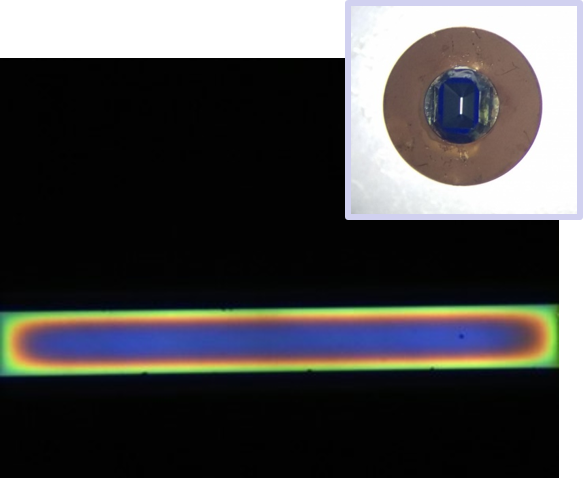.png) Regarding the limiting temperature range available for K-kit Regarding the limiting temperature range available for K-kit |
- Generally, the applicable temperature range of K-kit is from -40C to 120C. However, for some special kinds of liquid sample, which are most easily to be caused dramatic changes in their volumes or physical properties by just a little variation in surrounding temperature and so on, K-kit will be still possibly to be damaged, even within that available range of temperatures.
- If a liquid sample of K-kit needs to be observed under TEM at an extreme temperature condition, we suggest the user may consider to do some feasibility tests first, by such like heating the K-kit in an oven or soaking it in liquid Nitrogen for a certain time, to see if there is any damage found in the structure or loosening from the Cu grid, thereby to ensure a lower-risk result in TEM observation.
|
Example A
The K-kit sample of gap height 2um, which loaded with solution of 100nm Polystyrene beads and heated in an oven at temperature 120C for 0.5 hr, the result observed was normal, without any damage found in the structure. (Imaged by optical microscope in transmission mode) |

Before Oven | 
After Oven (@ 120C for 0.5 hr) |
.jpg) |
Example B
The K-kit sample of gap height 2um, which loaded with solution of AuCl4 and soaked in liquid Nitrogen at temperature around -77K for 0.5 hr, the result observed was normal, without any damage found in the structure. (Imaged by optical microscope in transmission mode) |

Before Liquid N2 | 
After Liquid N2 (@ -77K for 0.5 hr) |


.PNG)




